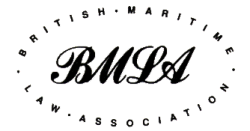
UNESCO: DRAFT CONVENTION ON
UNDERWATER CULTURAL HERITAGE
At the Executive
Council meeting held in Toledo in September 2000 this UNESCO project was
discussed. Patrick Griggs and Frank Wiswall reported on the background to this
project and pointed out that many of the provisions in the draft convention
were inconsistent with the rights of salvors under the 1989 Salvage Convention.
Members of the Council were informed of the report which John Kimball of the US
Maritime Law Association had prepared on this subject and Patrick Griggs drew
attention to a Draft Protocol to the Salvage Convention 1989 which had been
drafted by the late Geoffrey Brice Q.C. The purpose of this Protocol was to
accord to items of cultural importance found beneath the sea a degree of protection
but always respecting the well established law of salvage.
The Executive
Council decided to invite the existing International Working Group, chaired by
Professor Japikse (Netherlands) to consider the Brice Protocol and report to
the Singapore Conference whether the Protocol was an appropriate way of dealing
with the undoubted problem of protecting the cultural heritage without
unreasonably restricting the rights of salvors. Assuming a positive report it
was resolved that an International Sub-Committee would be set up to develop the
Draft Protocol and explore ways of implementing it.
The text of the
Draft Protocol is published below:
Draft Protocol to the Salvage Convention 1989
(on
the basis of a draft prepared by the late Geoffrey Brice, QC)
THE
PARTIES TO THE PRESENT PROTOCOL,
CONSIDERING that it is desirable to
amend the International Convention on Salvage done at London on 28 August 1989
HAVE AGREED as follows:
Article 1
For
the purpose of this Protocol:
1. "Convention" means the International
Convention on Salvage, 1989.
2. "Organization" means the
International Maritime Organization.
3. "Secretary-General" means the
Secretary-General of the Organization.
Article 2
Article 1, subparagraph (a) of the Convention
is replaced by the following text:
(a) Salvage Operation means any act or
activity to assist a vessel or any other property (including services to or
involving historic wreck) in danger in navigable waters or in any other waters
whatsoever.
Article
3
The following text is added as subparagraphs
(c)-1 and (c)-2 in Article 1 of the Convention:
(c)-1 Historic wreck means a vessel or cargo
or artefacts relating thereto including any remains of the same (whether
submerged or embedded or not) of prehistoric, archaeological, historic or other
significant cultural interest.
(c)-2 Damage to the cultural heritage means
damage to historic wreck including damage or destruction at the salvage site of
any significant information relating to the wreck or in its historical and
cultural context.
Article
4
The following text is added as subparagraph (k)
in Article 13 paragraph 1 of the Convention:
(k) in
the case of historic wreck, the extent to which the salvor has:
i) protected the same and consulted with,
co-operated with and complied with the reasonable requirements of the
appropriate scientific, archaeological and historical bodies and organizations
(including complying with any widely accepted code of practice notified to and
generally available at the offices of the Organization);
ii) complied with the reasonable and lawful
requirements of the governmental authorities having a clear and valid interest
(for prehistoric, archaeological, historic or other significant cultural
reasons) in the salvage operations and in the protection of the historic wreck
or any part thereof and
iii) avoided damage to the cultural heritage.
Article 5
Article
18 of the Convention is replaced by the following text:
The effect of salvor's
misconduct
A
salvor may be deprived of the whole or part of the payment due under this
Convention to the extent that the salvage operations have become necessary or
more difficult because of fault or neglect on his part or if the salvor has
been guilty of fraud or other dishonest conduct. In the case of historic wreck,
misconduct includes a failure to comply with the requirements set out in
Article 13 paragraph (k) or causing damage to the cultural heritage.
Article 6
Article 30, paragraph 1(d) of the Convention is
replaced by the following text:
(d) when the property involved is historic
wreck and is wholly or in part in the territorial sea (including on or in the
seabed or shoreline) or wholly or in part in inland waters (including the
seabed and shoreline thereof).